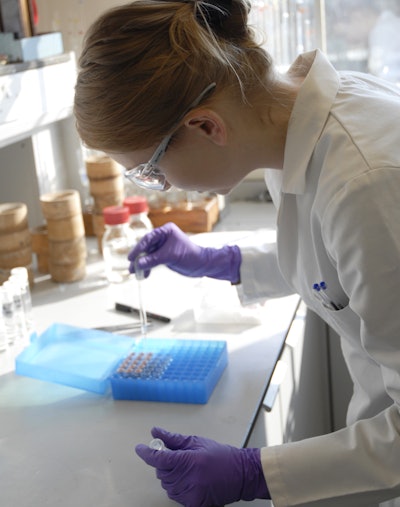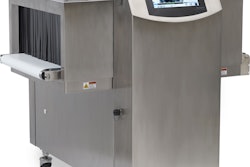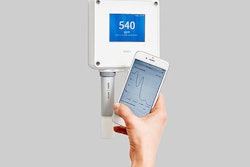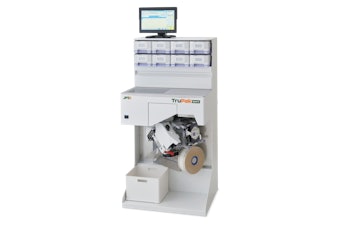The first step in the selection process is to consider the physical performance of each of the materials. Does the material have the correct barrier properties, such as protection from moisture?
There exist more than 90 generic plastic types with more than 100 sub-generic modified types. Plastics offer a combination of properties not available in other materials. Some of these include:
- Transparency—comparable with glass
- Good chemical resistance
- Good barrier properties—gas/liquid permeation resistance
- Can be sterilized
- Ability to be tinted in many different colors
The physical performance of plastics makes them prevalent in the pharmaceutical industry. In addition, they feature low unit costs, the ability to be processed and many can be recycled.
Another consideration is the ability of the material to be manufactured and molded with the correct tolerances. Metered dose inhalers, for example, have multiple parts that require manufacturing to tight tolerances to enable the patient to receive the correct dose of medication.
The nature of the material is especially important when considering the propensity of the material to shed particulates. In the last 12 months, there have been numerous product recalls due to potential particulate matter hazards.
Rubber
For rubber materials, as with plastics, there are a huge range of different types and suppliers, each offering a diverse range of properties. The same factors that are considered for plastics need to be reviewed for rubber. In general, rubber materials are more complex than plastics and typically include more processing steps and additives than plastics. The base elastomer will have fillers, pigments and a curing system added. In one example, the rubber will then go through processing to form a sheet from which gaskets can be cut out.
Glass
Glass could be viewed as an ideal material in certain circumstances. It is transparent, has excellent barrier properties and is easily sterilized. However, there have been medical products recalled due to glass delamination, which occurs when small (visible/sub-visible) particles of glass end up in the drug product. This typically happens with product formulations that have a basic pH (>7.0); that contain citrate buffers; have a high ionic strength (>100 mM NaCl); and/or are stored in a certain vial type (tubing) or vial size (>5 mL).
Metals
Metals are generally the lowest risk materials both in terms of their physical properties and chemical compatibility. Low risk does not mean no risk though and care should be taken if metals are treated in some way before use, even washing and the presence of surfactants should be considered. Surface treatments and overall oxidation need to be considered for compatibility and stability.
Chemical compatibility
There are two main areas to take into consideration for chemical compatibility of materials for medical products. First, does the active pharmaceutical ingredient (API) interact directly with the material, e.g. as sorption, either adsorption or absorption? This can affect the efficacy of the product by reducing the level of API available for the patient.
While receiving the incorrect dose can be a minor problem, in certain circumstances it can be potentially life-threatening. This is highlighted by a recent product recall of an epinephrine auto-injector that failed to deliver the correct dose. This type of product is used to treat life-threatening anaphylaxis. In this case, there was a physical malfunction of the device and not a chemical interaction. Secondly, can a chemical species migrate from the material used in the container closure system and leach into the product, potentially affecting patient safety?
Extractables and leachables
Extractables and leachables are a key area for regulators as they can affect the safety and efficacy of medical products. It is important to understand the difference between extractables and leachables.
Extractables are chemical species that can be released from a pharmaceutical packaging or delivery system, packaging component, or packaging material of construction. Extractables are determined under laboratory conditions, including extraction solvent, technique, stoichiometry, temperature and duration.Extractables themselves, and/or substances derived from extractables, have the potential to leach into a drug product formulation under normal conditions of storage and use.
Leachables are chemical species that can migrate from a packaging/delivery system, packaging component, or packaging material of construction into an associated drug product formulation under normal conditions of use, or during accelerated drug product stability studies. Leachables are typically a subset of extractables or are derived from extractables. Leachables can also be released into drug products during pharmaceutical processing.
Most regulators are only concerned with the leachables, as these are the chemical species that potentially could lead to patient exposure. However, leachables take time to form, so it can be very important to test for extractables, as these reduce the risk of a material not being suitable for its intended use. If, when testing extractables, a species of toxicological concern is found, it may be prudent to select a different material early in a medical product’s development. Extractable testing is implemented to understand potential risk to the patient and evaluate the material being used before a product launch delay. It must be pointed out that extractables may not appear as leachables and therefore may have no impact on patient safety.
For leachables, there are two areas of concern for patient safety. These are either direct toxicity to the patient from the leachable or the leachable effects on the efficacy of the drug product. Also, the method of administration plays a major role in the regulator’s concern for leachables.
In terms of allowable limits for leachables, these are typically lower than other impurities, e.g. from the API and are dependent on the dose given and the number of doses available in any device. The reason for the allowable level of leachables being lower is that the material of construction for the container closure system offers no direct benefit to the patient and another material that produces a lower level of leachables could be chosen.
Testing for regulatory submissions
Understanding extractables and leachables testing guidance, deciding on a suitable test strategy, and meeting timelines and resource restraints can be a challenge for many companies. Decisions made early in an extractables and leachables study will affect later stages. To determine the most efficient course of action, knowing what is recommended from a business and regulatory perspective is key.
A customized extractable and leachable program would include planning, an extractables study, data assessment, leachables method development, leachables validation and a leachables time point analysis.
Testing recommendations for FDA and EU documentation submissions generally include the U.S. Pharmacopeial Convention (USP) 1663 and 1664 guidelines. While this testing is not required by law, it is highly recommended and closely studied during the documentation review process for the medical device/pharmaceutical product packaging system.
In May 2016, USP produced revised recommendations on USP 661 with two additional chapters related to the use of plastics in medical packaging systems. USP 661.1 covers Plastic Materials of Construction and 661.2 covers Plastic Packaging Systems for Pharmaceutical Use. With these USP numbers being below 1,000, they are no longer recommendations but are now mandatory standards. The testing program would depend on the specific polymer used in the packaging system, but could include any combination of the following tests:
- Biological reactivity
- Infra-red analysis; Thermal analysis/differential scanning chromatography (DSC)
- Extraction (possible solvents: water, toluene, alcohol)
- Acidity or alkalinity
- Absorbance
- Total Organic Content (TOC)
- Metals/Inductively Couple Plasma (ICP)
- Liquid Chromatography (LC) (as required for the additive composition)
- Thin Layer Chromatography (TLC)
As with all testing to USP guidance, every scenario is different and should be carefully studied to determine the correct approach. For example, if a new material or change in formulation to a current material is introduced to a packaging system, testing must be conducted. If the packaging/delivery system is changed by utilizing materials that have been previously studied and approved, testing may not be required.
Material supplier considerations
Having selected a material based on an aspect of its physical performance, details around its supply need to be carefully considered. Factors that need to be considered include, but are not limited to:
- Location of supply
- Length of supply
- Supplier’s quality system
- Information from supplier
- Material stability
The International Pharmaceutical Aerosol Consortium on Regulation & Science (IPAC-RS) has produced the guide: Baseline Requirements for Materials Used in Orally Inhaled and Nasal Drug Products 2011.
This guide covers important areas such as food-contact compliance, heavy metals, DEHP, etc. The quality of information provided by suppliers needs to be considered, too. Lengthy documentation from a supplier may not address the performance and safety concerns that are important to the successful use of a material in the specific medical product under development.
There is only one thing that is certain with materials: change will happen at some point during the product’s life. How this change is managed can be very important. When a change happens, the faster it is communicated through the supply chain, the better for the medical device manufacturer and the patient. This change control should be part of a supplier quality agreement.
When major changes happen, such as a supply shortage or stoppage, the sooner this can be communicated and actions put in place, the better. Having a minimum length of guaranteed supply included in a contract can be very useful; an ideal minimum is 36 months rolling availability. This can be made up in multiple ways and may consist of a mixture notice period with last call option, and insights on raw material shelf life and finished component shelf life.
Material selection
Aspects such as the supplier and supply of materials, chemical compatibility, communication and change management are important and need to be considered when selecting materials. Choosing the right material for use in container closure systems is complex because the number of material options is extensive. The primary consideration when selecting which material to use for a medical product must be the physical performance of the material. If the material does not perform physically, there will be no performance and therefore no product.
It is often helpful to work with experts who can navigate the material selection and testing process, evaluate each specific scenario and recommend the appropriate, most cost-effective and efficient testing program required. Independent, third-party testing can assist in finding the right balance of evaluating risk factors and specific testing techniques that will help manufacturers meet industry and performance requirements.
Editors note: Author Andrew Feilden is Chemistry Operations Director at Smithers Rapra’s laboratories in Shrewsbury, U.K. Feilden serves a range of medical device and pharmaceutical clients by conducting extractables and leachables studies, assisting with material selection and supporting regulatory submissions. He has 16+ years of experience supporting the pharmaceutical industry. Prior to joining Smithers, Feilden worked for AstraZeneca, leading extractable and leachable testing and working on a wide range of dosage forms. He has also written regulatory documents for drug substance and container closure systems, resulting in successful regulatory approval.






















